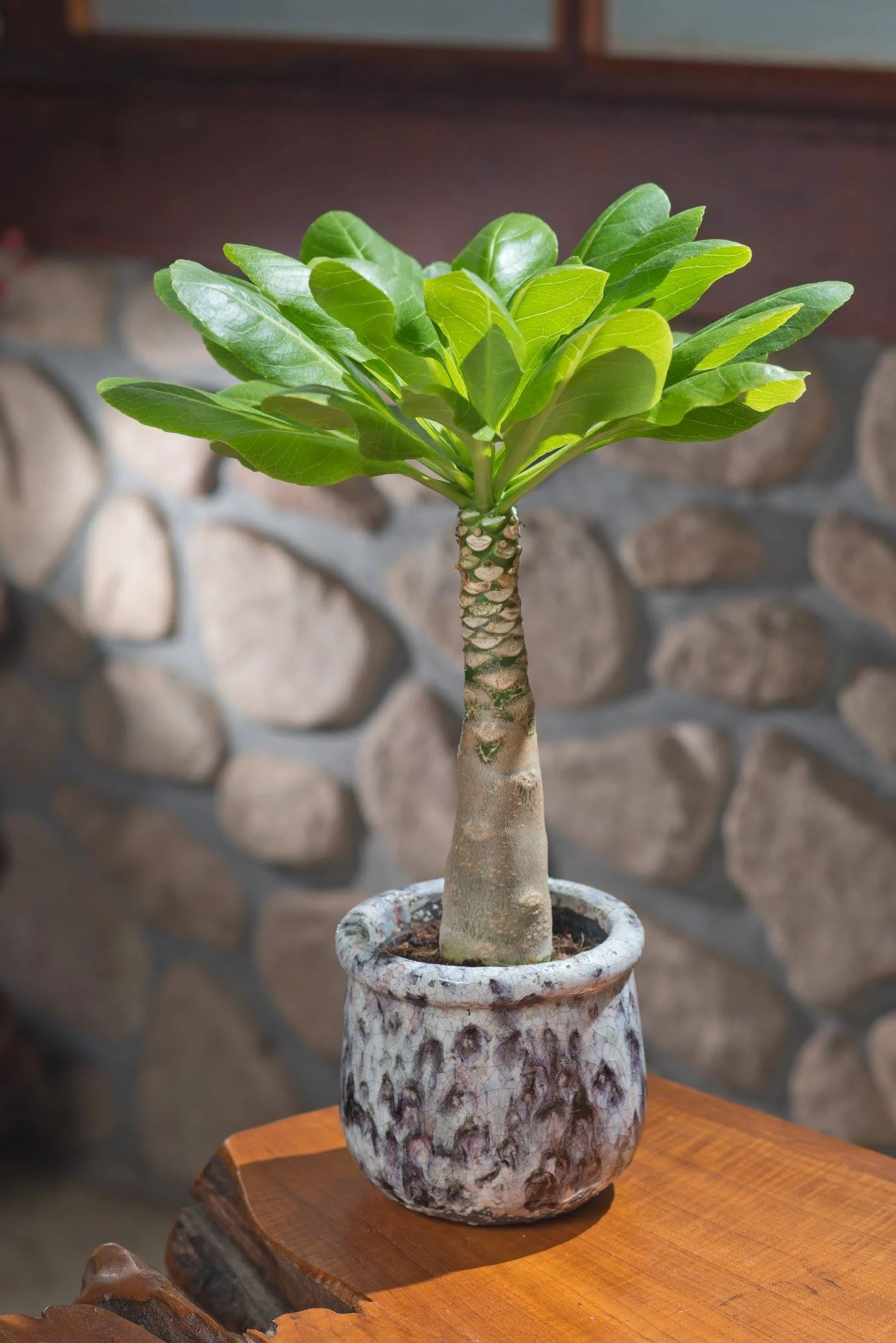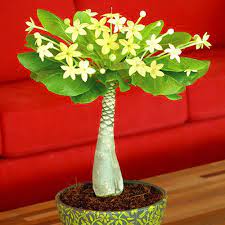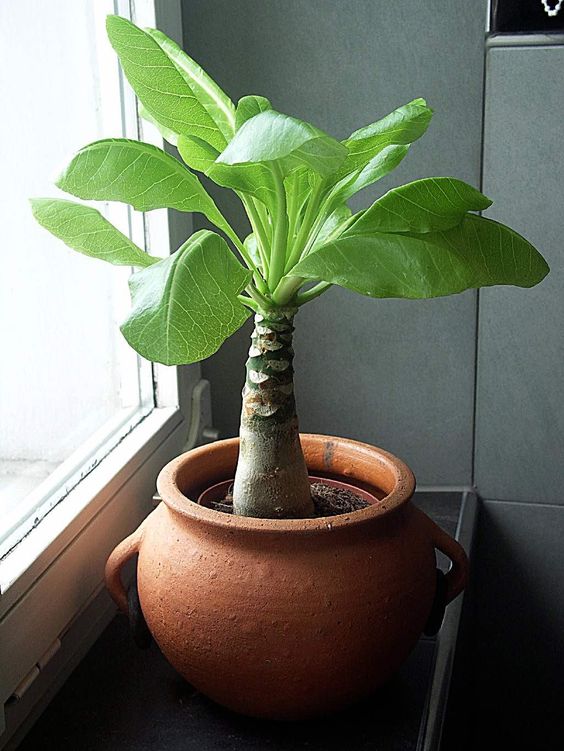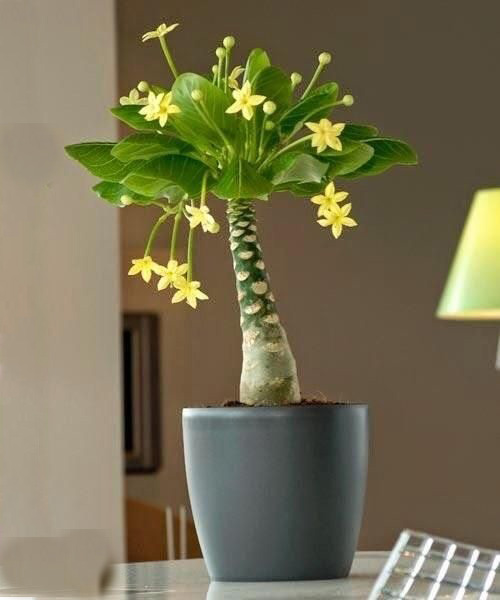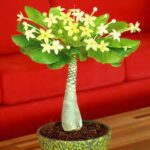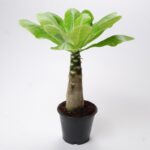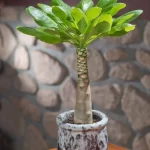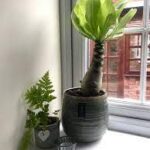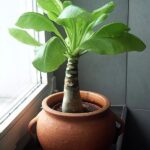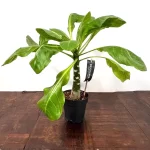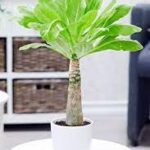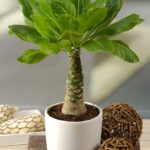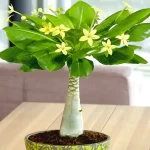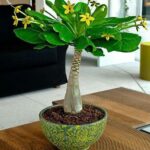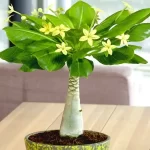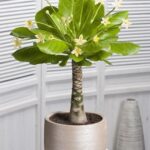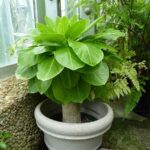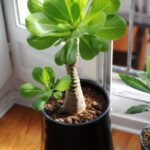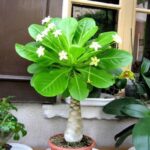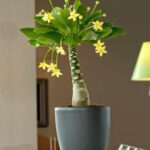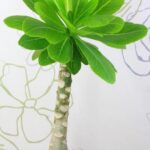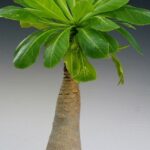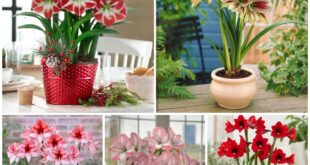What is a Hawaiian palm?
The fabulous Hawaiian palm is a beautiful sight in the garden or living room, creating a tropical ambience with its magnificent green leaves and exotic appearance. The plant also produces exquisite long yellow flowers in October – making it a beautiful addition to your home well into autumn – with the flowers becoming more beautiful as the plant ages.
Hawaiian Palm Tree Facts
The Origins of Brighamia insignis (Hawaiian Palm)
The Hawaiian palm has been growing on the exotic island of Hawaii for millions of years, with the island’s isolated location allowing plants and animals to develop undisturbed. It is believed that a certain species of moth is the only creature that can pollinate the flowers of this plant.
The rarity of Brighamia insignis
Due to the arrival of humans in Hawaii and the destruction of its natural habitat, this moth is now extinct. This means that the Hawaiian palm is also threatened with extinction because without pollination by moths, reproduction is severely restricted. This makes the palm tree one of the rarest plants in the world. Currently, only about seven of these palms grow in the wild, isolated on the Hawaiian island of Kaua’i.
What is being done to protect this plant?
Numerous scientists and volunteers are actively involved in protecting the Hawaiian palm. This group is part of the IUCN Species Survival Commission (SSC), whose goal is to halt the decline in biodiversity. The group hand-pollinated the palm’s flowers and harvested the seeds, which are now used to propagate the plant.
A large number of plants have now been cultivated in a special protection area and the Hawaii palm is expected to be released back into the wild at some point. The IUCN is also trying to restore the palm’s natural habitat so that it can ultimately survive independently.
By purchasing one of these plants, you directly support the work of the IUCN/SSC Hawaiian Plant Specialist Group and help protect the Hawaiian palm and many other plants from extinction. Click here to purchase a Hawaiian palm tree for your home or garden.
Brighamia Insignis Care
Although these plants are rare, Hawaii palm care is fortunately very easy. Here are the most important care instructions you should follow:
Watering and feeding
It is enough to water once a week. If the soil is still moist, you can even skip a week.
The plant is a succulent and therefore requires very little water – too much could cause it to die.
Feed once a month all year round.
Positioning and cropping
Give the plant a protected location in the house or garden in summer. This prevents excessive leaf drop. The Hawaiian palm has an atypical growing season, with most growth occurring in the winter months and dormancy occurring in the summer. From August it starts to grow vigorously again.
Break off the lower leaves when they turn yellow. This creates the trunk that is characteristic of palm tree species. New leaves develop in the crown and the older leaves on the underside of the plant are shed. Regular inspections and removing infected leaves will help prevent most problems.
Repot the palm into a larger pot every year. It can reach a height of one meter.
For best results, give the Hawaiian palm a bright indoor location during the winter.
Allow the room temperature to fall below 12°C at night to avoid damage from spider mites.
Prevent insect damage
Pest infestations can be controlled by simply breaking off any damaged leaves and rinsing the stem and remaining leaves with lukewarm water to remove any remaining insects. Within six weeks the palm tree will be like new again.
Insect damage can be recognized by the formation of small cobwebs between the leaves (spider mite) or by the appearance of spots on the leaves (thrips). Infected plants should preferably be placed outdoors in summer. The plant is not susceptible to other damage.
As you can see, caring for Hawaiian palm trees is very simple. So consider adding a plant to your home or garden that adds beautiful shapes and colors, knowing that you are supporting the work of the IUCN/SSC Hawaiian Plant Specialist Group.
 careyfashion.com Carey Fashion
careyfashion.com Carey Fashion
